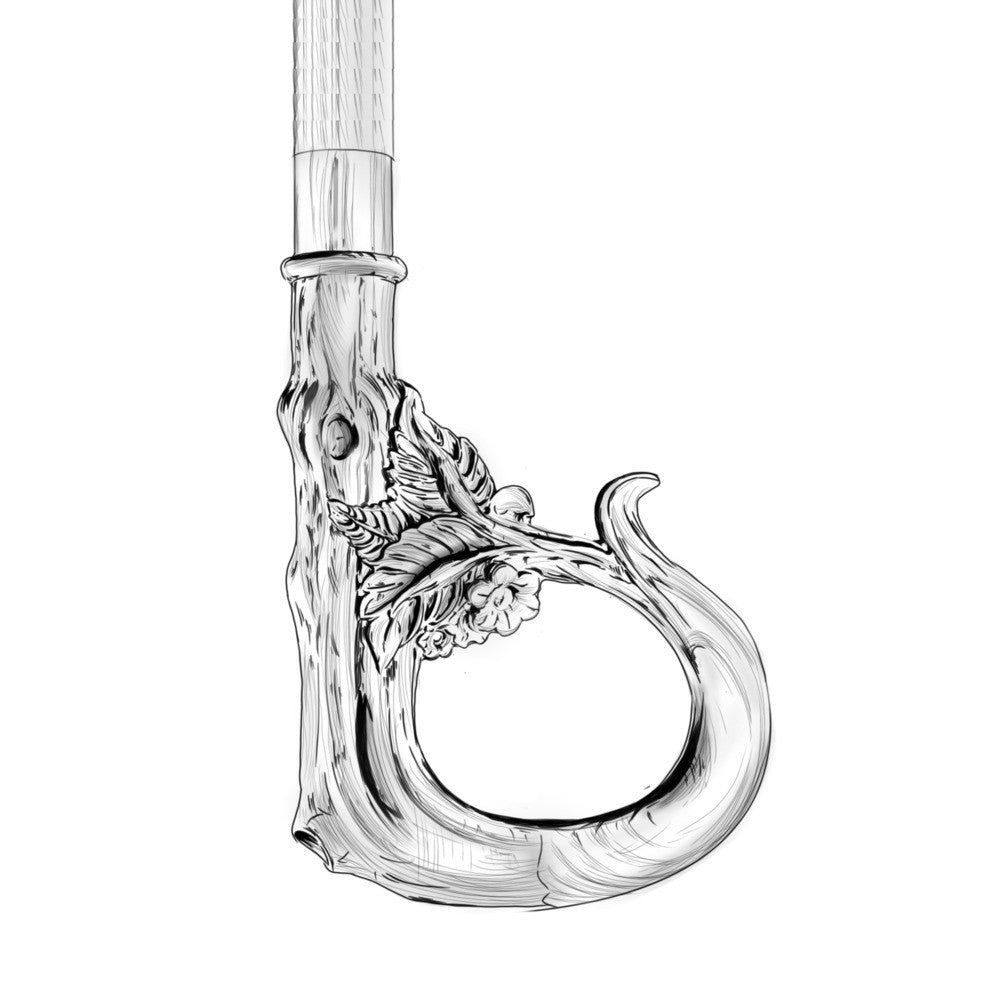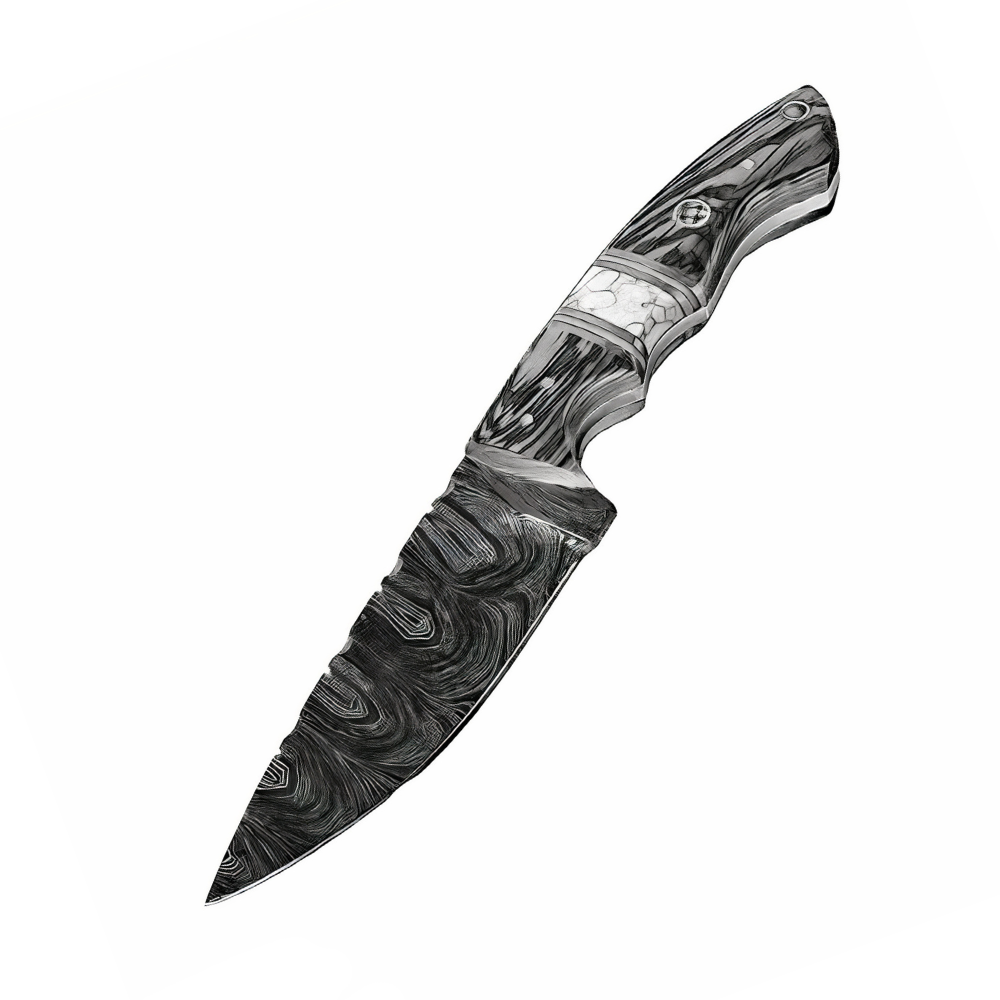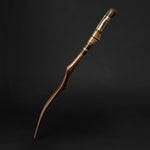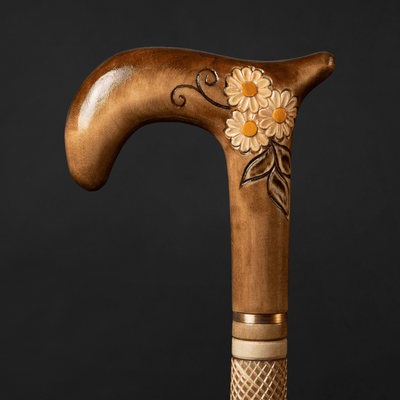You have no items in your shopping cart.
Recent Posts
-
The Art of Christmas Design: Walking Canes That Celebrate the Season in Style
-
How an Ergonomic Walking Cane Handle Prevents Hand and Wrist Strain?
-
How to Walk With a Cane Correctly to Avoid Back or Shoulder Strain?
-
5 Common Mistakes People Make When Buying a Walking Cane (and How to Avoid Them)
-
How to Choose a Walking Cane That Reflects Your Personality (Not Just Your Needs)?
-
Walking Canes That Match Formalwear for Weddings and Events
MOST POPULAR NOW
26
Mar
A walking stick can be more than just a mobility aid – it can be a symbol of independence, adventure, and personality. However, over time, wear and tear can take their toll, leaving your walking stick looking worn and unstable. Restoring your walking stick can breathe new life into it, making it look and feel as good as new. In this article, we'll take you through the steps on how to restore your walking stick, whether it's made of wood, metal, or any other material.
Why Restore Your Walking Stick?
Before we dive into the restoration process, it's important to understand why you should restore your walking stick. Here are some of the main reasons:
- Extend the life of your walking stick: Restoring your walking stick can help it last longer and prevent further damage.
- Save money: Buying a new walking stick can be expensive, and restoring your old one can save you money.
- Preserve sentimental value: If your walking stick has sentimental value, restoring it can help you keep it in good condition and maintain its value.
- Personalization: Restoring your walking stick can give it a personalized touch and make it feel unique to you.

Materials You'll Need
Depending on the type of walking stick you have, you may need different materials for the restoration process. Here are some common materials that you might need:
- Sandpaper (various grits)
- Steel wool
- Mineral oil
- Beeswax
- Varnish or lacquer
- Paint stripper (if applicable)
- Paint and paintbrush (if applicable)
How to Restore a Wooden Walking Stick
Wooden walking sticks are the most common type, and the restoration process is relatively straightforward. Here are the steps to follow:
Step 1: Clean the Walking Stick
Use a soft cloth or brush to remove any dirt, dust, or debris from the walking stick. You can also use a damp cloth if necessary, but make sure the stick is completely dry before moving on to the next step.
Step 2: Sand the Walking Stick
Using sandpaper, gently sand the walking stick to remove any scratches or dents. Start with a coarse grit sandpaper and gradually move to a finer grit for a smoother finish. Be careful not to sand too much, as this can damage the walking stick.
Step 3: Apply Mineral Oil
Apply mineral oil to the walking stick with a soft cloth, making sure to cover the entire surface. Mineral oil helps to nourish the wood and prevent it from drying out or cracking. Let the oil soak in for a few minutes before wiping off any excess with a clean cloth.
Step 4: Apply Beeswax
Apply beeswax to the walking stick with a soft cloth, making sure to cover the entire surface. Beeswax helps to protect the wood from moisture and gives it a shiny finish. Let the wax dry for a few minutes before buffing it with a clean cloth.

Step 5: Apply Varnish or Lacquer
If you want a more durable finish, you can apply varnish or lacquer to the walking stick. Make sure to apply it in a well-ventilated area and follow the manufacturer's instructions. Let the varnish or lacquer dry completely before using the walking stick.
How to Restore a Metal Walking Stick
Metal walking sticks are less common than wooden ones, but they can still be restored with some care and attention. Here are the steps to follow:
Step 1: Clean the Walking Stick
Use a soft cloth or brush to remove any dirt, dust, or debris from the walking stick. You can also use a damp cloth if necessary.
Step 2: Remove Any Rust or Corrosion
If your metal walking stick has any rust or corrosion, you'll need to remove it before moving on to the next step. You can use a rust remover or a mixture of baking soda and water to gently scrub the affected area. Be careful not to damage the metal.
Step 3: Sand the Walking Stick
Using steel wool or sandpaper, gently sand the walking stick to remove any scratches or imperfections. Make sure to sand in the direction of the grain for a smoother finish.
Step 4: Apply Mineral Oil
Apply mineral oil to the walking stick with a soft cloth, making sure to cover the entire surface. Mineral oil helps to prevent rust and corrosion and gives the metal a nice shine.
Step 5: Apply Varnish or Lacquer
If you want a more durable finish, you can apply varnish or lacquer to the walking stick. Make sure to apply it in a well-ventilated area and follow the manufacturer's instructions. Let the varnish or lacquer dry completely before using the walking stick.
How to Restore a Walking Stick with Other Materials
If your walking stick is made of a material other than wood or metal, such as bamboo or plastic, the restoration process may vary. Here are some general tips:
- Clean the walking stick with a soft cloth or brush
- Remove any scratches or imperfections with sandpaper or steel wool
- Apply a protective coating or wax to the surface
Make sure to research specific restoration techniques for your particular type of walking stick to ensure the best results.
Conclusion
Restoring your walking stick can be a rewarding and practical task. By following these steps, you can extend the life of your walking stick, save money, and preserve its sentimental value. Remember to choose the appropriate materials for your specific type of walking stick and take your time to ensure a high-quality restoration.
FAQs
- Can I restore a walking stick that is severely damaged?
- It depends on the extent of the damage. If the walking stick is beyond repair, it may be best to replace it.
- Can I use any type of oil or wax for the restoration process?
- It's best to use mineral oil and beeswax, as they are specifically designed for wood and are less likely to cause damage.
- Can I paint my walking stick?
- If you want to paint your walking stick, make sure to use a paint specifically designed for the material and follow the manufacturer's instructions.
- How often should I restore my walking stick?
- It depends on how often you use it and how well you take care of it. Generally, you should restore your walking stick every few years or as needed.
- Can I restore a walking stick myself or should I hire a professional?
- You can restore a walking stick yourself if you have the appropriate materials and tools. However, if you're unsure or don't feel comfortable doing it yourself, it's best to hire a professional.
Also Purchased
-
Beige Walking Cane for Ladies Chamomile Flower, Wooden Walking Stick
Introducing our beautiful Beige Walking Cane for Ladies with Chamomile Flower, a Wooden Walking Stick that is hand carved and handmade, making it both pretty and unique. This walking cane...$79.50 -
Exotic Burl Wood Walking Cane – Fashionable Artisan Stick
A sculptural statement in deep, oceanic blue — this walking cane is more than a support accessory, it's wearable art. Meticulously hand-shaped from stabilized burl wood, the handle evokes the...$425.00 -
ArtWalkingSticks™ MAGIC Walking Cane, Handmade - Make to Order
This piece of art is created for those who value details. We make one of a kind, handcrafted wood and resin canes. Our Wooden Canes are completely unmatched in creativity....$430.00 -
Umbrella with Eagle Handle, Fashion Umbrella For Men
Make a bold and fashionable statement with our Umbrella with Eagle Handle - a unique and functional accessory designed for men. The striking eagle handle is the highlight of this...$325.00 -
Fashionable Lion Shoehorn Long Handle, Pearly Brown Shaft, Handmade
Introducing our Fashionable Lion Shoehorn, a handcrafted, long-handled shoe horn with a pearly brown shaft that's both stylish and practical. The intricate Lion design adds a touch of elegance to...$240.00 -
ArtWalkingSticks™ MAGIC Red Walking Cane - Unisex, Handmade
This piece of art is created for those who value details. We make one of a kind, handcrafted wood and resin canes. Our Wooden Canes are completely unmatched in creativity....$425.00
































